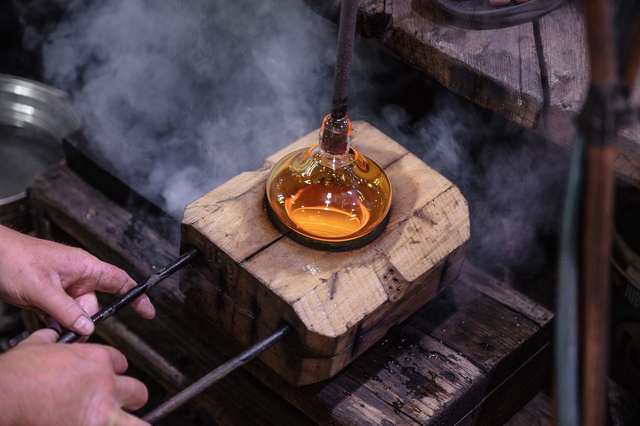Glass Must Never Be Boring
By: Ondřej Pokorný and Petra Ajšmanová, curator of the Ajeto 30 exhibition Nový Bor Glass Museum
Photo: Igor Zacharov, archive
Three Geniuses and The Ruins od a Velvet Dyeing Plant
At the beginning of the 1990s, the ruins of a former velvet dyeing plant stood at the southern edge of the village of Lindava. When Novotný, Fafala and Šípek discovered this place by the river Svitavka, they knew their search was over and their dream could come true. Once the necessary renovation work was finished, the plant would be the home of Ajeto, their young glassmaking firm that had previously been reliant on the facilities of various North Bohemian smelting plants to get their products made.
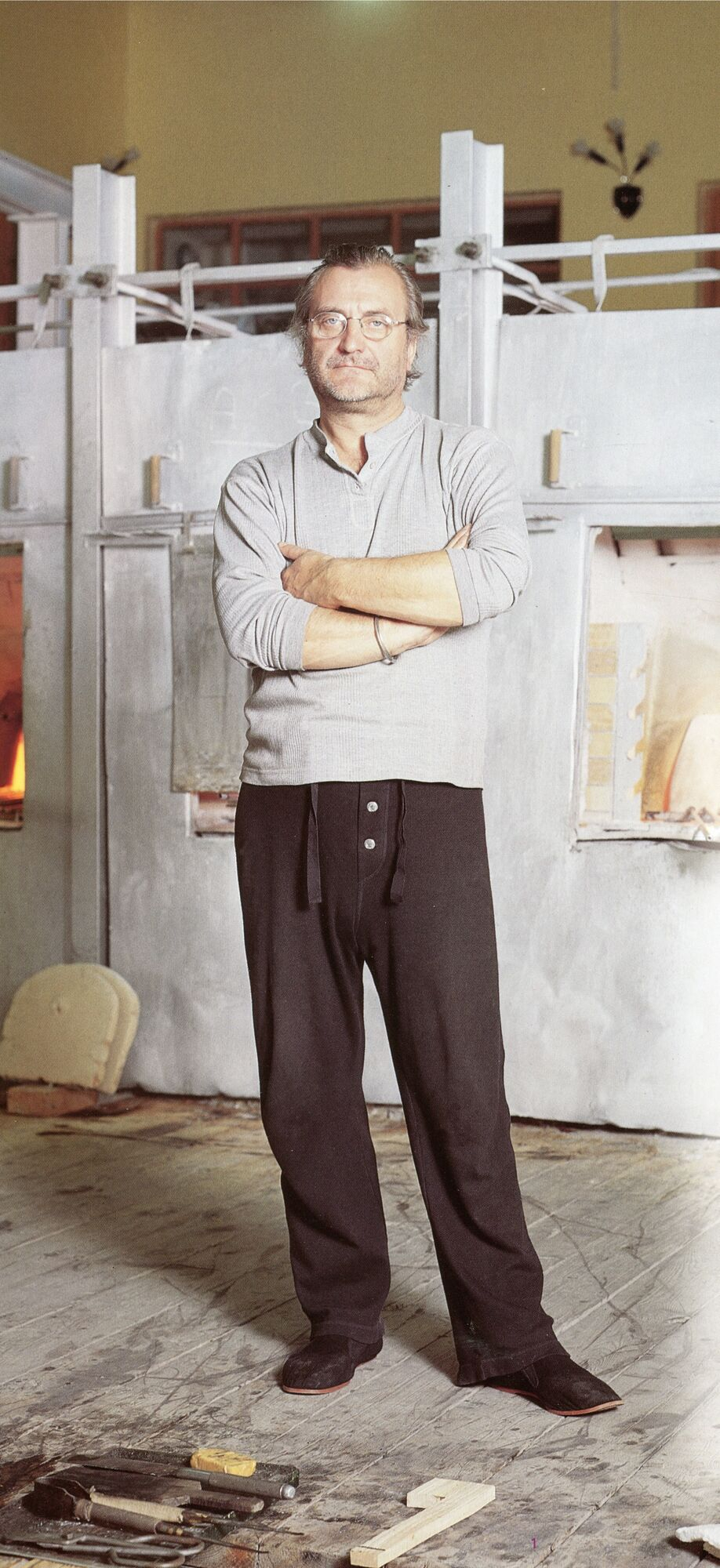
Nobody knew it at the time, but the launch of trial operations on 28 October 1994 was the start of something phenomenal. While efficiency is the watchword at most other glassworks and craftsmen’s work is measured out in minutes, at Ajeto, which is named after one of Šípek’s vases, almost everything is subordinated to creativity, freedom and experimentation. This is all down to the glassworks’ founders. Fafala, Ajeto’s technology specialist, built the furnaces and mixed the shades of the glass batch mixtures using his own secret formulas. Novotný, one of the best glassmakers in the world, took people under his wing and trained them into supreme craftsmen. And Šípek, the artistic director, designed the items the works would produce.
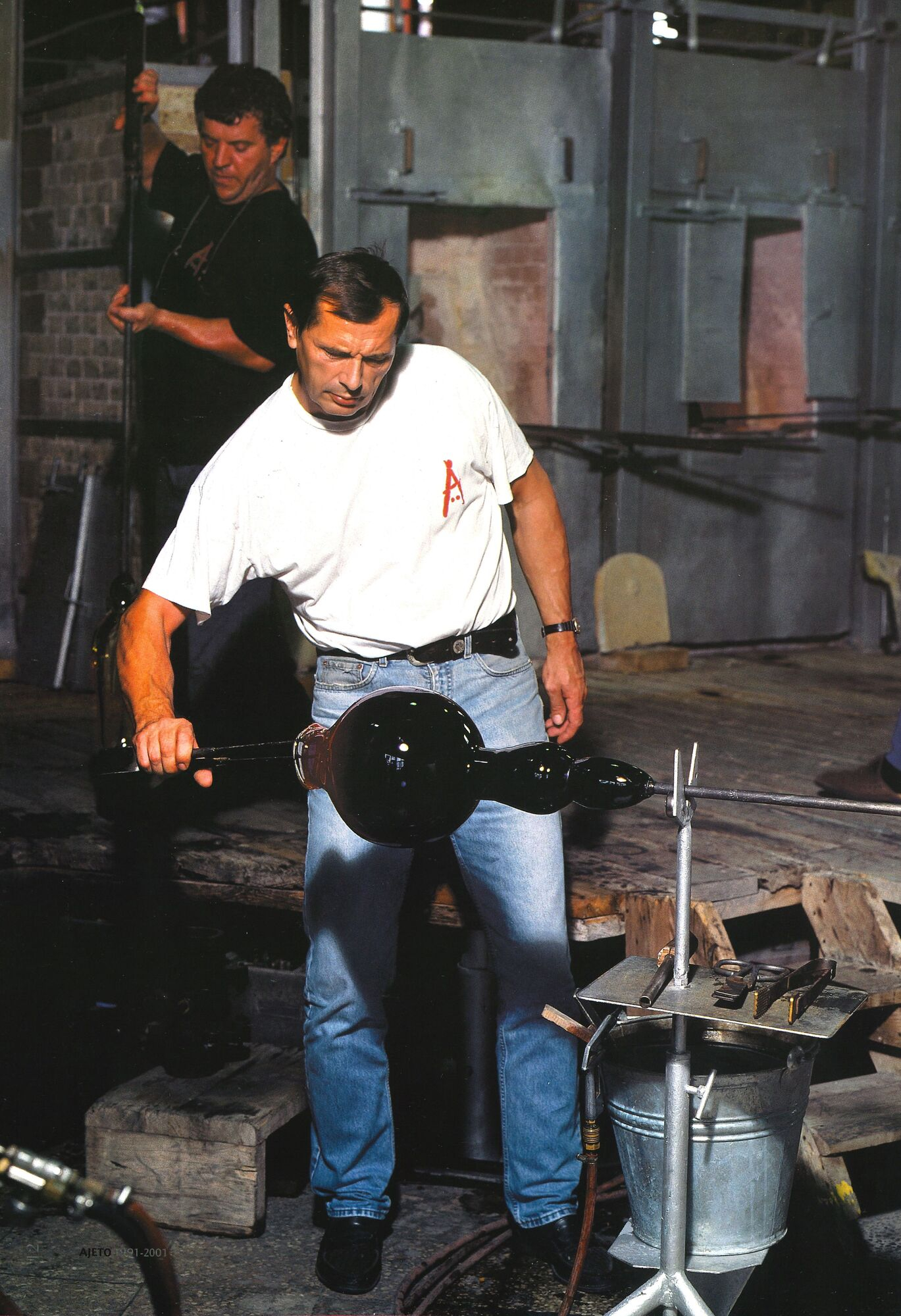
Part Playground, Part Laboratory
Ajeto’s story has been a rollercoaster ride. From humble beginnings, the glassworks has risen to the very top thanks to Šípek’s original ideas. He imprinted his unconventional style on the glassworks, characterised by a wide range of colours combined with a technically demanding baroque morphology and decadent postmodernism. Ajeto has made vases that Mick Jagger, Bob Dylan and Jean-Paul Gaultier bought for their homes, lighting fixtures for Prague Castle, the trophies for the Czech Republic’s Thálie theatre awards, and even decorative items that former president Václav Havel would present to distinguished visitors. Ajeto has gradually become synonymous with Czech handmade glass and has won commissions from big names like Lobmeyr, Swarovski, Skogsberg and the New York’s Metropolitan Museum of Art. What’s more, the glassworks has become a magnet for artists and designers from all over the world including Dale Chihuly, Charles Parriott, Leon Applebaum, Marvin Lipofsky, George J. Sowden, and Miluše and René Roubíček.
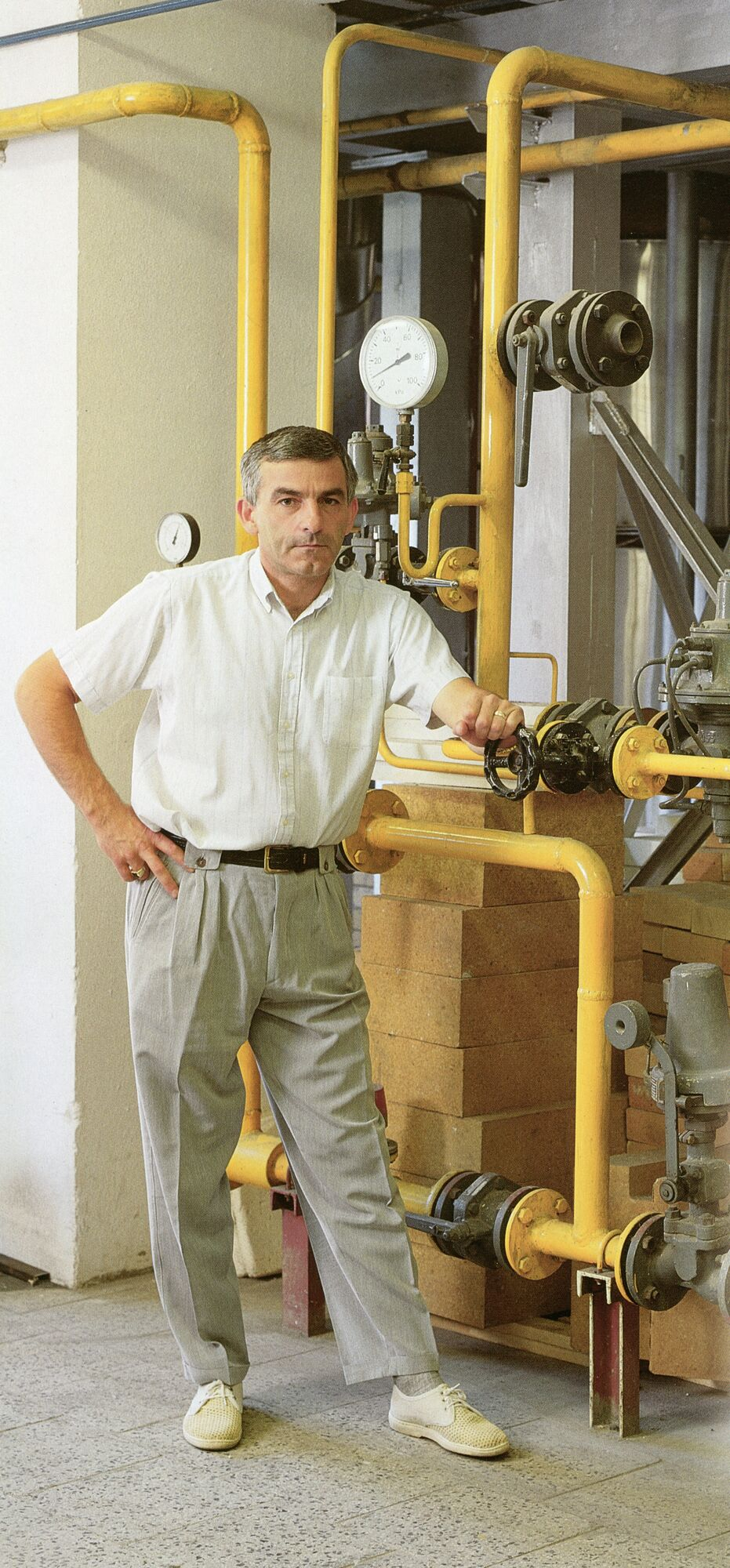
What’s the secret? It’s a combination of the mindset of the local glassmakers, for whom nothing is impossible, and the amazing technological facilities. At Ajeto, the glass is melted in a six-pot furnace, which makes it possible to melt up to six types of glass at the same time. While this may be hard to grasp for a layman, artists immediately understand the incredible variability this makes possible. The glassworks offers approximately twenty colors to choose from, including ten colors from their own recipes, dozens more from glass rods, colored frits and powders. Ajeto is one of the few places that still works with the popular uranium glass and can make its own glass moulds.
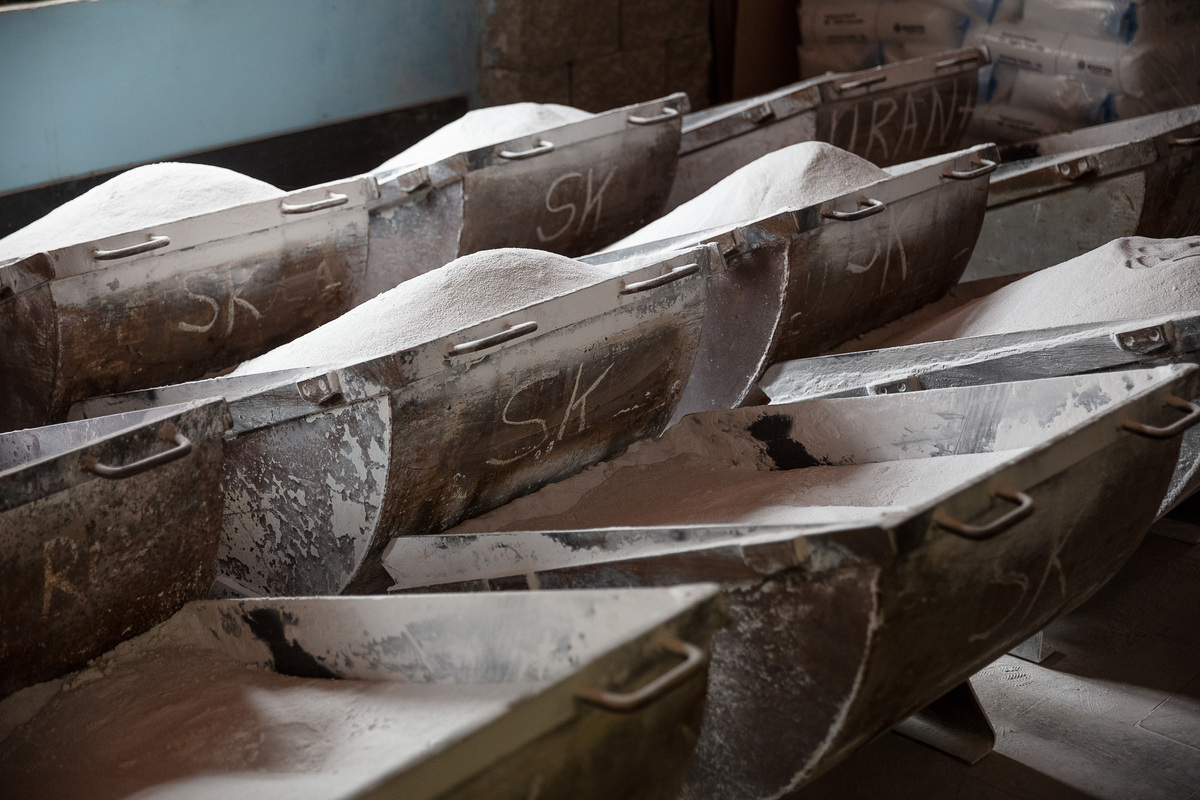
Amalgamation With Lasvit and Young Talents
Šípek’s exit from the company in 2008 marked the start of a difficult period. The glassworks lost one of its driving forces, and at the very moment when the market was cooling down. Orders dried up, and Ajeto had to tighten its belt. The glassworks was saved by their cooperation with Lasvit. In 2017, the plant became part of Lasvit, which produces light sculptures, lighting fixtures, decorative glass and other items from its design portfolio here. But Ajeto continues to enjoy a great deal of autonomy. Where else would they dare to haul an entire furnace out into the yard to experiment with melting auto glass because it might result in an exceptional installation for Milan’s Salone del Mobile? Only at Ajeto!
This is one of the reasons Ajeto continues to be a very attractive destination for young talents. The recently deceased master glassmaker Petr Novotný brought up a whole new generation of outstanding craftsmen who can shape glass “freehand”, without moulds. Glassmakers like that are very rare. The glassworks manages to marry original aesthetics with contemporary design, notable examples being the collections Underwater by František Jungvirt, Opulent by Lukáš Jabůrek and Kontrast by David Ševčík. The Ajeto philosophy is best understood when you watch its glassmakers at work. Whether they’ve been there from the start or only joined recently, they’re having the time of their lives! And it’s no exaggeration to say that this spirit is a prerequisite for the sustainable development of the individual, the Ajeto glassworks and Czech glass in general.

Bořek Šípek, Libor Fafala and Petr Novotný
This trio started producing art glass under the brand AJETO in 1989. In 1994, they built their own modern glassworks of the same name in Lindava. The company produced its own collections according to Šípek’s designs and also carried out commissions for other artists and design brands. Since 2017, Ajeto has been part of the Lasvit group. Currently, the brand presents its own collections in collaboration with leading Czech designers. The Ajeto glassworks remains to be one of the world’s best art glassworks.
